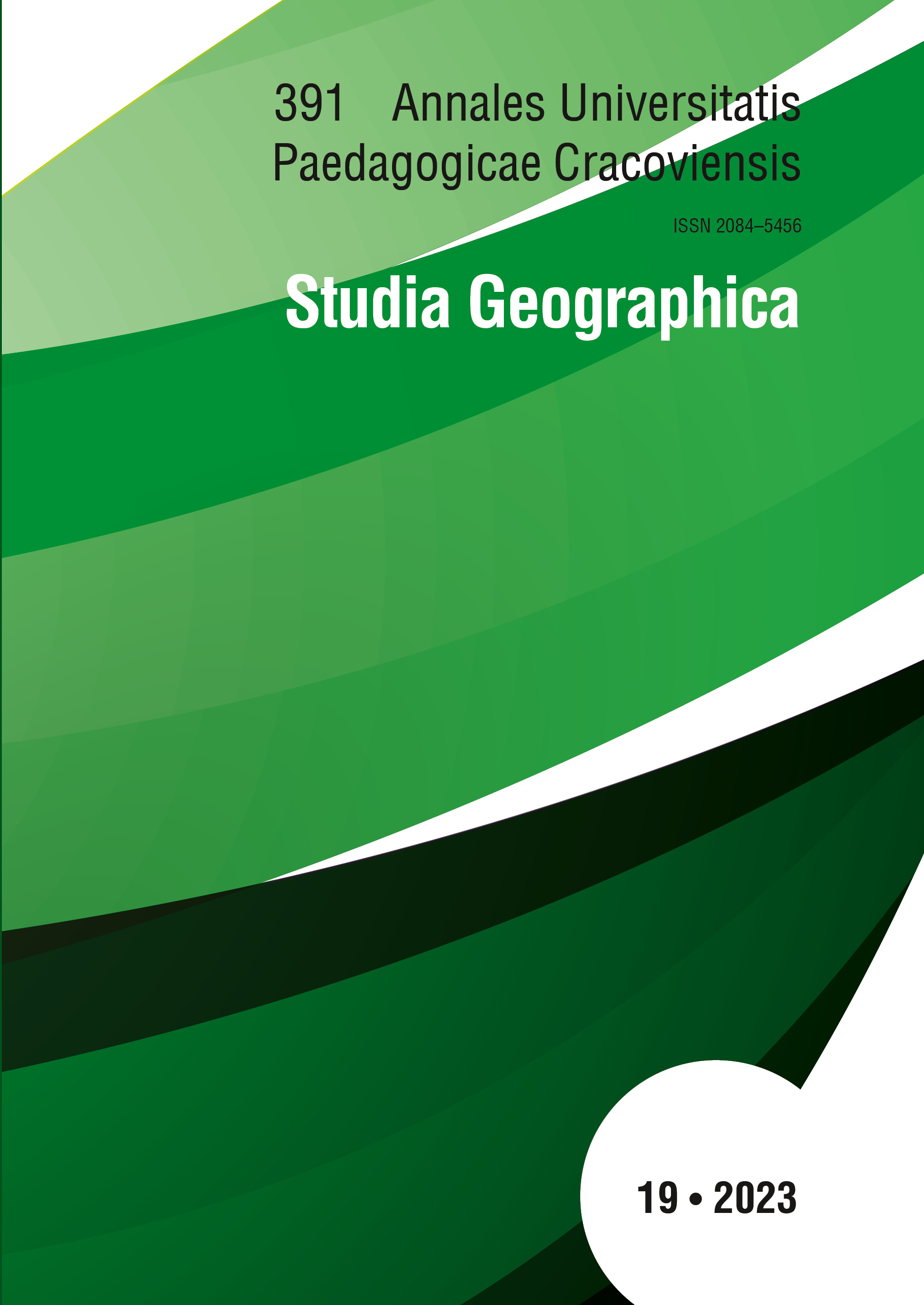Exploratory analysis of health- related indicators contained in the Sustainable Development Goals for the State of Mexico
DOI:
https://doi.org/10.24917/20845456.19.2Keywords:
State of Mexico, Geoinformatics, health- related indicators, Sustainable Development GoalsAbstract
The health- related Sustainable Development Goals (SDGs) serve as pivotal benchmarks for gauging the health, well- being, and overall development of a nation’s populace. This study aims to meticulously scrutinize the available SDG indicators for the State of Mexico at the municipal level, employing sophisticated techniques rooted in exploratory spatial data analysis. The primary objective is to comprehensively grasp the interplay between these indicators and their geographic distribution. This analytical approach will unveil discernible patterns encompassing clustering, dispersion, spatial self- correlation, and other geographical trends within the selected indicators. Spatial autocorrelation, notably, plays a pivotal role in discerning similarities or disparities in values and their potential correlation with geographic proximity. This analysis serves to ascertain the existence of significant spatial patterns. To accomplish this, graphical tools like maps and diagrams will be utilized. These visual representations effectively convey geographical information, thereby facilitating the communication of findings. This methodology will be particularly invaluable in pinpointing vulnerable populations. Anticipated outcomes include robust findings that can substantially inform the development agendas and guide the implementation of public health policies within the Mexican entity.
References
Anselin, L., (1995). Local Indicators of Spatial Association—LISA. Geographical Analysis, 27(2), 93–115.
Anselin, L. (1999). The Future of Spatial Analysis in the Social Sciences. Geographic Information Sciences, 5(2), 67–76. DOI: 10.1080/10824009909480516.
Asma S., Lozano R., Chatterji S., et al. (2020). Monitoring the health- related Sustainable Development Goals: lessons learned and recommendations for improved measurement. Lancet, 395(10219), 240–246. DOI: 10.1016/S0140-6736(19)32523–1
Breilh, J. (2003). Epidemiología crítica: ciencia emancipadora e interculturalidad. Buenos Aires : Lugar Editorial .
Buzai, G., Baxendale, C. (2012). Sociospatial analysis with geographic information systems. Volume 2: Territorial planning thematic vactorial. Editorial Site
García, N., Tello P. (2020). Geographic Guerrero State Assessment: An Approximation based on socioeconomic factors vulnerability mycos. In: Santana et al. (coord). Ordinationón territorial: A review from the Sustainable Development Goals (First editionón, pp. 133–160). Toluca, México: Aut University of State of México. http://ri.uaemex.mx/handle/20.500.11799/109169
GBD 2015 SDG Collaborators (2016). Measuring the health- related Sustainable Development Goals in 188 countries: a baseline analysis from the Global Burden of Disease Study 2015. Lancet, 388(10053), 1813–1850. DOI: 10.1016/S0140-6736(16)31467–2
Gross Domestic Product by State 2020. Press Release Nom727/2021’. Inegi. December 9, 2021. Retrieved 16 September 2022. Available in: Press release. Gross Domestic Product by State 2020 (inegi.org.mx)
Íñiguez L., Barcellos, C. (2003). Geography and health in Latin America: evolution and trends. Cuban Journal of Public Health, 29(4) Retrieved October 09, 2023, http://scielo.sld.cu/scielo.php?script=sci_arttext&pid=S0864-34662003000400007&lng=es&tlng=es
Mitchell, A., (200). Esri’s Guide to GIS Analysis. Vol. 2, Esri Press, 5
Novillo-Ortiz, D., Quintana, Y., Holmes J.H., et al. (2021). Leveraging data and information systems on the sustainable development goals. International Journal of Medical Informatics, 152(104504). DOI: 10.1016/j.ijmedinf.2021.104504
Porto- Gonçalves C.W. (2002). Da geografia às geo-grafias: um mundo em busca de novas territorialidades. In: Ceceña A.E., Sader E. (eds.), Infinite War: Hegemony and World Terror. Buenos Aires: Latin American Council of Social Sciences, p. 217–256.
Santana G., Aguilar A.G. (2019). Method for spatial autocorrelation (Application to homicide mortality in the State of Mexico). Posted in Quantitative Methods in Human Geography. Ed. Buzai G. and Santana M.V. Available in: http://ri.uaemex.mx/bitstream/handle/20.500.11799/100130/2019%20Indicadores%20aplicaci%C3%B3n%20a%20la%20microplaneaci%C3%B3n.pdf?sequence=1&isAllowed=y
Siabato W., Guzmán J. (2019). Spatial autocorrelation and the development of quantitative geography. Cuadernos de Geografía: Revista Colombiana de Geografía, 28(1), 1–22. DOI: 10.15446/rcdg.v28n1.76919
United Nations. (2020). Do you know all 17 SDGs? [Online] Retrieved 01 August 2022, https://sdgs.un.org/goals#history
United Nations. (2022). Goal 3: Ensure healthy lives and promote well- being for all at all ages [Online] Retrieved on 05 August 2022 https://www.un.org/sustainabledevelopment/es/health/
Wilson, G.M., Ball, M.J., Szczesny, P., Haymann, S., Polyak, M., Holmes, T., & Silva, J.S. (2021). Health Intelligence Atlas: A Core Tool for Public Health Intelligence. Applied Clinical Informatics, 12(4), 944–953. DOI: 10.1055/s-0041-1735973
World Health Organization (2020). Global Health Statistics 2020: Monitoring Health for the SDGs [Online] Retrieved on 01 August 2022, https://apps.who.int/iris/handle/10665/338072
Downloads
Published
Issue
Section
License
Copyright (c) 2024 Annales Universitatis Paedagogicae Cracoviensis Studia Geographica

This work is licensed under a Creative Commons Attribution-NoDerivatives 4.0 International License.
The submission of a paper to be published is synonymous with an agreement to transfer the copyright free of charge from the author to the publisher. The author also agrees to permit the publisher to publish the paper in printed form, open access online form, digital library form and other digital platforms with which the publisher has or will have a publishing agreement. Furthermore, the author agrees to not limit the number of copies that may be printed or issued by the publisher. In the case of co-authored papers, it is assumed that the corresponding author is authorized to represent the remaining co-authors in this respect. Authors are requested to sign a copyright declaration.

